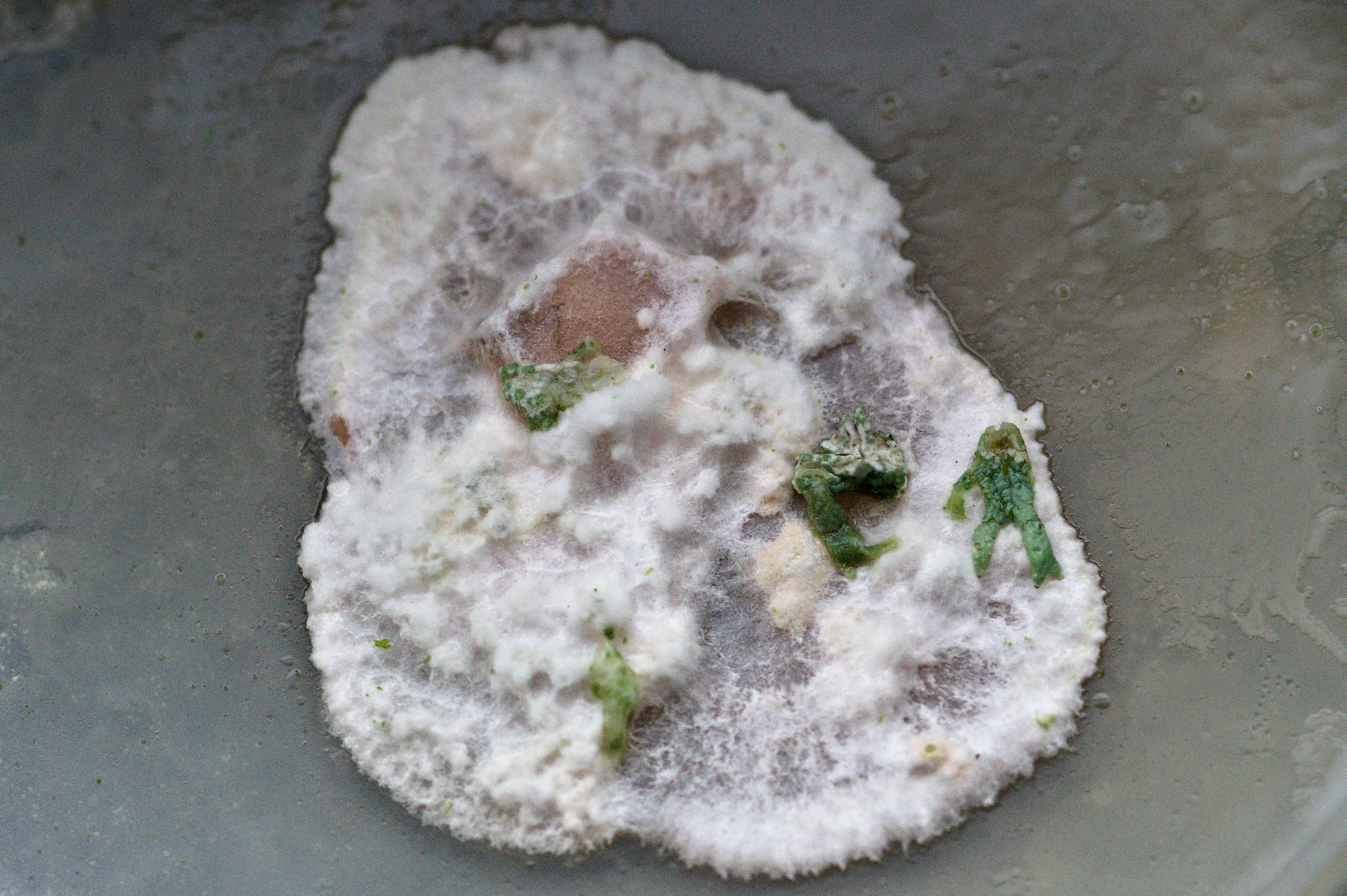Genocide, xinjiang, camps,the, china
(Excellent tankie comment according to science)
(ironically) oyster meal 💀
off for a few days and then this honker popped up. So next round I’m doing only 10-15 minutes of fan per day. Maybe even less Good to know! I have some blocks almost fully colonized. I wonder if putting them to fruit in an open room (my living room) is already too much air flow for them.
So, how is the situation with the white spots? Did they end up being benign?
After lots of testing I found a configuration that works for me! In the end it is very simple, but I am quite a newbie at this so it took some effort to figure out what works. ChatGPT helped a bit too - and also confused me a lot - but it helped.
What I do now is:
I set up a wireguard tunnel. The VPS in this example has the 'wireguard' ip of 10.222.0.1, and my home network is 10.222.0.2. These are my configs (/etc/wireguard/wg0.conf):
VPS wireguard config:
spoiler
[Interface]
Address = 10.222.0.1/24
ListenPort = 51820
PrivateKey = <VPS Private key>
[Peer]
PublicKey = <Home network public key>
AllowedIPs = 10.222.0.2/32
PersistentKeepalive = 25
Home network (Respberry pi) config :
spoiler
[Interface]
Address = 10.222.0.2/32
PrivateKey = <Home network private key>
[Peer]
PublicKey = <VPS Public Key>
Endpoint = <VPS_IP>:51820
AllowedIPs = 10.222.0.0/16
PersistentKeepalive = 25
Then, I use the following iptables commands in the VPS to map requests to port 80 and 443 to the ports 80 and 443 of the tunnel. What really confused me for a while was that I did not know that I needed to include the "POSTROUTING" step so that the packets get sent back the correct way, and that I had to set net.ipv4.ip_forward=1 in /etc/sysctl.conf:
IP tables in VPS:
spoiler
iptables -t nat -A PREROUTING -p tcp --dport 443 -j DNAT --to-destination 10.222.0.2:443
iptables -t nat -A POSTROUTING -p tcp -d 10.222.0.2 --dport 443 -j SNAT --to-source 10.222.0.1
iptables -t nat -A PREROUTING -p tcp --dport 80 -j DNAT --to-destination 10.222.0.2:80
iptables -t nat -A POSTROUTING -p tcp -d 10.222.0.2 --dport 80 -j SNAT --to-source 10.222.0.1
Then, in my home network I use the standard nginx config:
spoiler
server {
server_name website.com;
listen 80;
location / {
return 301 https://$host$request_uri;
}
}
server {
server_name website.com;
listen 443;
location / {
proxy_set_header Host $host;
proxy_pass http://0.0.0.0:<Website Port>;
}
# certificate management here
ssl_certificate /etc/letsencrypt/live/website.com/fullchain.pem; # managed by Certbot
ssl_certificate_key /etc/letsencrypt/live/website.com/privkey.pem; # managed by Certbot
include /etc/letsencrypt/options-ssl-nginx.conf; # managed by Certbot
ssl_dhparam /etc/letsencrypt/ssl-dhparams.pem; # managed by Certbot
}
This configuration seems to work, and since both ports 80 and 433 are mapped you can use certbot to generate and renew the SSL certificates automatically.
I am still learning, and this is the first thing that worked - so there might be a better way! But a lot of things I tried would not complete the SSL handshake correctly. > push m
In that case, you’re better off just using the VPS machine as port forwarding port 443 to your home machine’s wireguard IP address and handle the SSL/TLS termination on the home machine.
This is what I would like to do! I was trying to handle the SSL termination 'automatically' by simply forwarding the connections to 443 of my machine's wireguard IP using nginx, but I did not manage to get it to work. That's when I found that I need to use something like 'stunnel' to handle the SSL termination. But I think that you may be suggesting an even simpler method of using port-forwarding instead of the reverse proxy. I am not sure how to achieve that, I will look into it using these terms.
ssh tunnels
There are so many concepts to learn about! But if the SSH tunnel improves the the available useful bandwidth compared nginx/wireguard, it might be worth looking into it too. Thanks!
Thanks a lot! This is kind of the configuration that I have converged to, with nginx and WireGuard. The last thing I need to set up correctly is for the SSL handshake to occur between the client and my home server, and not between the client and the internet-facing VPS, such that the information remains encrypted and unreadable to the VPS. The two strategies that I have seen can do this is SNI routing with nginx or to use stunnel. I still have not been able to set up either!
Wow! What is the substrate? Do you have any special tips for making them grow this large?
What you can do is buy 2 plants and rotate them every week
What a good idea! I have a few potted sanseverias and I might experiment with a rotation like this one. I will feel a bit bad bringing one into the darkness while the others stay in the sun... But I have often thought that a plant would look nice in the bathroom.
That's the next topic then. Thank you
Oh, cool! I have managed to do it with the Wireguard tunnel! I set up a tunnel and use the nginx proxy_pass to redirect through the tunnel. It is pretty nifty that I don't even need to port-forward!
My next step is: in my current configuration, the SSL handshake occurs between the VPS and connecting client. So the VPS has access to everything that goes through... I need to figure out how to hand-shake through the tunnel such that the VPS does not get the SSL keys.
Thanks a lot for your suggestion!
Sanseverias are quite resilient to low light and erratic watering, but I don't think any plant will "thrive" with little light. It will survive for a long time.
Thanks! Wireguard was suggested as a VPN, and I am currently playing with that.
From what I have learned today, I think that Wireguard Tunnel is what I want!
First I was able to use nginx as a reverse proxy to route the information from my home network through the VPS. But with this approach the client would do the SSL handshake with the VPS, and then the VPS fetches information from my home network via HTTP. Since there is no encryption layer between my VPS and my home network, I suppose that the flow of information between my home server and the VPS is insecure.
Then, I need to establish some form of encrypted connection between my home server and the VPS... And that is where the Wireguard Tunnel comes in! This tunnel allows me to transfer the information with encryption.
I am still reading and setting it up, but yeah, I'm liking this, thanks!
You may be seeing pics faster that I expected!
Great!!
That one has little white dots all over the kernels throughout the jar
Hmm, that is suspicious. Did you inoculate using a liquid culture? If you spread the liquid culture throughout the grains, it could look like that... But if your inoculant is more localized (spawn, agar, or tissue) and the whit spots appeared all over the grain, you might not be so lucky 😰
Reverse SSH... I'll look into it. What I am thinking is that I may be able to run the reverse proxy on the VPS directly, and then direct it towards the nextcloud port in my home network.
Thank you! I will look into this
How can I use a VPS to protect my home's ip?
I have a nextcloud instance being hosted from my home network. The URL associated with it points directly at my home's IP. I don't want to host the instance on a VPS because disk space is expensive. So, instead, I want to point the URL at the VPS, and then somehow route the connection to my home's nextcloud instance without leaking my home's ip.
How might I go about doing this? Can this be achieved with nginx?
EDIT: Actually, not leaking my home's IP is not essential. It is acceptable if it is possible to determine the IP with some effort. What I really want is to be able to host multiple websites with my single home IP without those websites being obviously connected, and to avoid automatic bots constantly looking for vulnerabilities in my home network.
Well you learn through experience!! I find it useful to write observations like this in my electronic notes. In the short term it might feel like you will remember how much the popcorn expanded forever, but you might not use popcorn again for a year or two and then choose to try it out again - and then it can be helpful to look back at your popcorn notes and remember what you experienced!
Good luck transferring the mycelium to the grains!
Lichen: The Mysterious Love Child of Fungi and Algae

YouTube Video
Click to view this content.
Lichen resynthesis experiment


I am trying to grow Oakmoss lichen (Evernia prunastri) at home, which is a highly valued lichen in the perfume industry due to its woody and sweet odor.
Lichens consists of an association between at least a fungus and a green algal partner - but often other organisms like yeasts and cyanobacteria are also present in the association.
I tore some oakmoss to expose the white tissue underneath, and you can see the fungal hyphae and the algae:
To culture a fungus one usually begins by isolating it away from the many contaminants that are naturally present on the fungus. Lichens are more problematic because in their lichenized form they grow too slowly to succesfully out-pace contaminants. The organisms that they are made of grow faster when they are not lichenized, but they have different methods of isolation. The trick to grow them is to isolate the fungus (mycobiont) and the alga (photobiont) separately and then try to bring them together in a process called "resynthesis".
I am trying to do this process at home, starting from a small piece of lichen that I collected from the bark of a tree. This is what grew out of the tissue sample when it first went into the agar, showing lots of contaminants fighting for the nutrients in the dish:
And this is the growth after the first transfer:
In parallel, I am trying to isolate the algal partner, which is a Trebouxia. One method is to place the tissue in agar plates with no nutrients and expose the plate to the sun. The other method is to place the tissue in a solution of orchid fertilizer in water and leave it by the window.
The cells of the alga are easily released into the water when the lichen is crushed. I confirmed that under the microscope. This is a photo of the released Trebouxia cells under the microscope:
The plate in the image associated with this post is a plate of the Evernia mycobiont that had bacterial contamination in it. Rather than throwing it away, I decided to crush some lichenized tissue in water and pour in on top of the lichen to check whether that is enough to achieve lichenization.
Just wanted to share some of my experiments! Any input on how to achieve the resynthesis would be greatly appreciated ;-)

